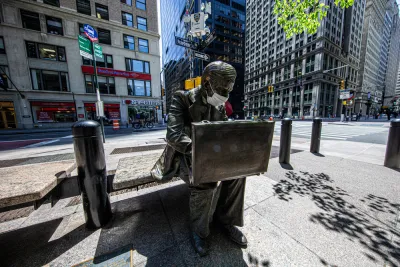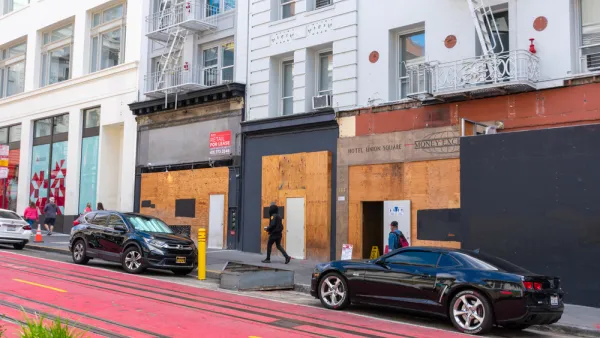The back-to-work data everyone is talking about? It comes from a security company that offers swipe badges for entrance into office buildings all over the country. Some experts say their data is too incomplete to be authoritative, however.

The data driving the public understanding of office vacancies in the wake of the Covid-19 pandemic has come into new scrutiny in recent weeks, first with a story in Bloomberg, and then a more skeptical article in the New York Post.
The company at the center of attention is Kastle Systems Inc., which provides security badges for building entry in 2,600 buildings in 138 cities, according to the article by Sarah Holder for Bloomberg.
Office occupancy has become intoxicating, according to Holder, and Kastle is at the forefront of the data reporting the trends in the post-pandemic workplace, publishing a weekly “Back-to-Work Barometer.”
“Fast-forward to 2022, and the 50-year old company has become, if not exactly a household name, at least the most well-known player in a not-so-sexy industry—and a key participant in the ongoing conversation about when, and whether, remote workers will get back to their desks,” writes Holder.
A few days after the Bloomberg article, however, Steve Cuozzo wrote an article for the New York Post offering another side to the story—i.e., that the "Back-to-Work Barometer” is far from complete.
“The widely cited Kastle Systems Back-to-Work Barometer, which claims to tally how many employees have returned to offices, misses hundreds of skyscrapers with the highest attendance — and the result is a whopping undercount, real estate insiders say,” writes Cuozo.
The controversy is reminiscent of the numerous occasions that housing experts have instructed media outlets not to rely on listing websites—which don't have access to significant swaths of the housing market, especially at the low end—to draw conclusions about the housing market.
Similarly, the Post analysis presented by Cuozzo finds that Kastle data misses too many large buildings in New York City to draw a complete picture of office vacancy.
FULL STORY: Meet Kastle Systems, the Covid-Era Kings of Back-to-Work Data

Analysis: Cybertruck Fatality Rate Far Exceeds That of Ford Pinto
The Tesla Cybertruck was recalled seven times last year.

National Parks Layoffs Will Cause Communities to Lose Billions
Thousands of essential park workers were laid off this week, just before the busy spring break season.

Retro-silient?: America’s First “Eco-burb,” The Woodlands Turns 50
A master-planned community north of Houston offers lessons on green infrastructure and resilient design, but falls short of its founder’s lofty affordability and walkability goals.

Test News Post 1
This is a summary

Analysis: Cybertruck Fatality Rate Far Exceeds That of Ford Pinto
The Tesla Cybertruck was recalled seven times last year.

Test News Headline 46
Test for the image on the front page.
Urban Design for Planners 1: Software Tools
This six-course series explores essential urban design concepts using open source software and equips planners with the tools they need to participate fully in the urban design process.
Planning for Universal Design
Learn the tools for implementing Universal Design in planning regulations.
EMC Planning Group, Inc.
Planetizen
Planetizen
Mpact (formerly Rail~Volution)
Great Falls Development Authority, Inc.
HUDs Office of Policy Development and Research
NYU Wagner Graduate School of Public Service




























